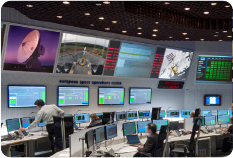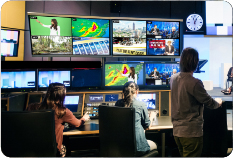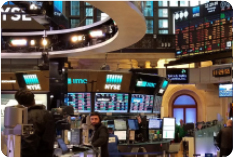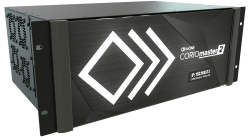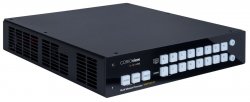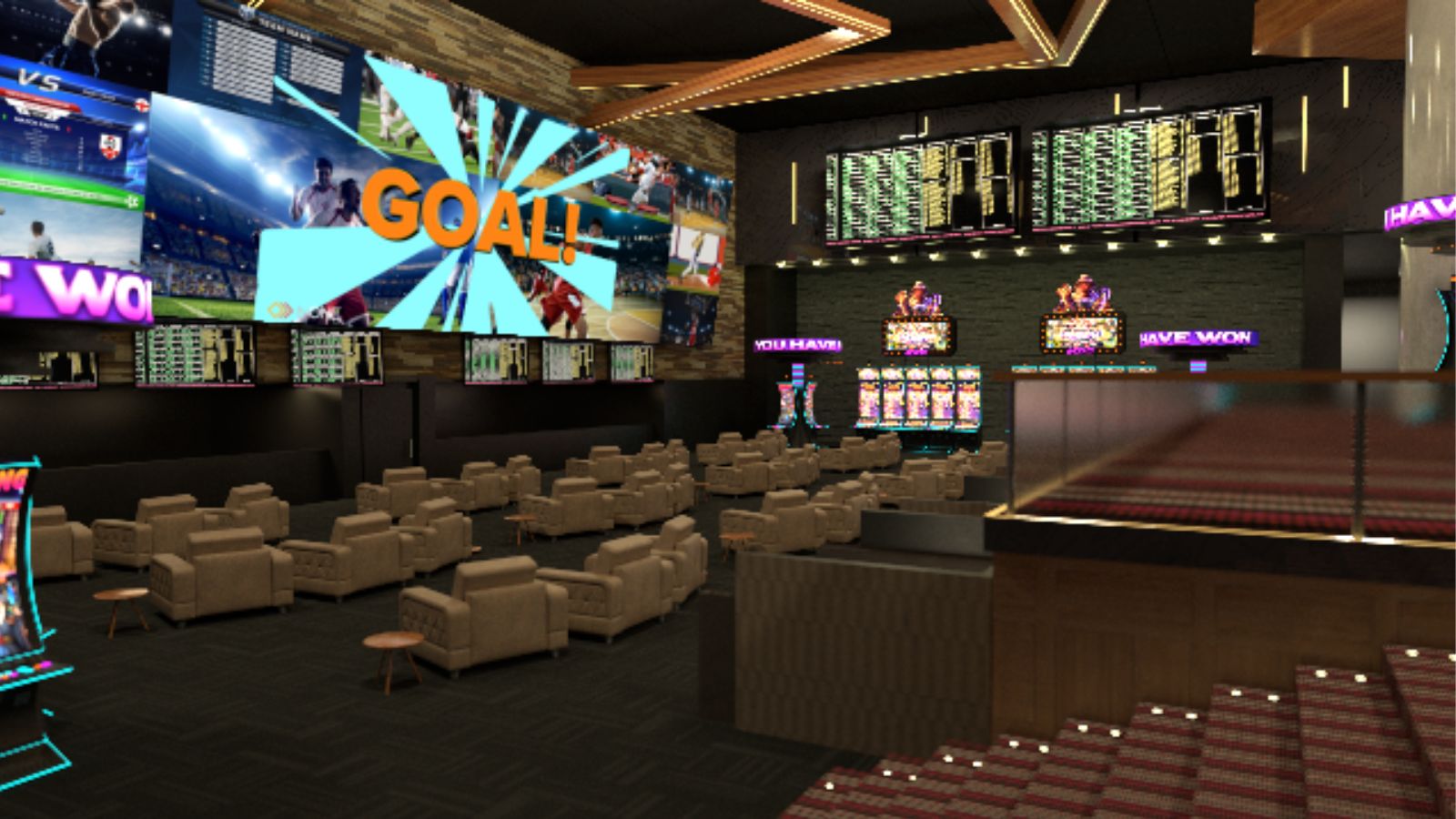
Visiting a casino is no longer just about gambling as today’s guests expect to be entertained throughout their entire visit, including the use of high-end, innovative video for truly unforgettable experiences. High rollers also demand this engagement in every area of their day-to-day lives, and casino owners who fail to keep up with their expectations risk falling further behind and losing those important, big spenders.
With customers seeking out memorable experiences, innovative AV technology solutions stand ready to deliver those lasting impressions for casinos. Stepping inside a casino, the various areas are often competing, and the AV solutions need to be flexible and powerful enough to be deployed to support table gaming, slot machines, performance areas, bars, restaurants, sports books, and the multitude of requirements behind the scenes.
In this blog, we will explore five ways that you can stay ahead and create your next end-to-end solution that is guaranteed to attract new players to your casino.
Creative Video Displays & LED
Inform, engage, and entertain your guests from the instant they enter your casino with creative video walls. There are limitless options that can be designed to make your wall uniquely creative and go beyond the normal, boring square video wall. With scattered wall displays, extra wide LED, or extensive edge and 3D projection, you will instantly differentiate your casino from the rest. Do not limit your imagination to inside the casino and consider large scale LED set ups that include architectural lighting fixtures directly mounted to the building exterior. In addition to the wide variety of fixed installations, casino’s must also cater for various live events and one-off concerts and your technology and workflow choices must allow for this flexibility of use.
With attractive visual real estate, you can interactively inform your visitors of your attractions and promotions while engaging them with your brand in an entertaining installation that helps you stand out from the crowd. To avoid the pitfall of using simple, inflexible signage players, look at your options which include media servers and video processors, or even a combination of both.
Using a media server, you can also choose to combine video output with projection and lighting to create immersive environments. By projection mapping onto any desired surface or model, it can turn anything into an interactive focal point or branded area to convey corporate messages and promotions. Another option is to map video and colors onto lighting fixtures, enhancing any building façade or background element.
Video wall processors can also offer unique visual canvasses. Extra wide LED implementations are becoming increasingly popular not only because they open a visual horizon, but also because many rooms demand a move beyond 16:9, because ceiling heights can be a limited factor. The most efficient and flexible solution is to choose a video wall processor that, in addition to displaying external sources, can internally playback several synchronized 16:9 media clips. Creating this material will reduce the amount of system bandwidth required and will maintain quality. It is also amazingly simple for your graphic designer to create material, as they will work in the native widescreen resolution before rendering out each part of the design as 16:9 pieces.
Sportsbooks
First time visitors to a sportsbook are normally in awe of the vast variety of options available on the various displays inside the venue, which are displayed simultaneously on ultra-wide LED displays and can range in size up to 70,000+ pixels for entertaining visual experiences.
The best solution to match with your LED of choice is a multi-window video processor which provides eye-catching performance backed up by raw processing power and the flexibility to show different windows layouts and to select new events throughout the session. Your video wall processor choice must be able to mix and match digital AV signals with broadcast sources, IP streams and multi-media and then scale and convert them for instant display on your wall. With a large wall in a sportsbook, you may want to connect forty or more sources and have enough system bandwidth to display them simultaneously in ultra-low latency.
Many sportsbooks also require more than one wall. Of course, one option is to add additional processors, however this adds to the system cost by adding extra infrastructure, matrices, and cables. Control will be far more complex; therefore, it is far better to use an all-in-one device that can display many windows across multiple walls or extra-large pixel spaces. Also, check how many different live sources can be connected to your video wall processor and how many separate video windows can be displayed simultaneously.
Control Rooms
Another space where a video wall processor can excel in a casino is in one of the many control rooms, however large or compact it may be as security operators increasingly demand these multi-window environments as standard so they can focus on seamless information analysis and sharing.
Control room staff demand total reliability, elevated levels of security, and ultimate levels of flexibility with a wide choice of any signal types ranging from AV, IP or Broadcast as well as onboard clips and stills at any resolution. The number of video windows that are available is another critical choice, as is high video quality and low latency. Ask to see this performance with a mix of sources and ensure you see a “clean” cut or fade to black when you switch between your window sources, even when the resolution/frame rate varies between those sources.
Other, often demanded features include information overlays and flexible control.
In a control room, so much information is being concurrently shared. Consider overlaying statistical information onto the relevant video sources or adding icons to highlight important actions.
Control is equally important, and most users will want the option of exploring higher levels of integration with API (Application Programming Interface) protocols and advanced options for RESTful control to open the potential for seamless two-way feedback between the video processor and control software to be able to introduce time saving, efficiency boosting, automated workflows.
Video Extension & Reliability
There is a myriad of choices when it comes to extending your video sources, including the formats supported, distance, and the extension type itself. It is easy to fall into the trap that all video extension systems are born the same and to make your choice on price alone by assuming the tech specs are identical. While there are similarities on paper, the true test will come when the system is installed in the real world where the electromagnetic spectrum (EMS) can seriously affect the signal that you will see drop out or no signal whatsoever leading to time consuming fault finding and expensive rework. Therefore, it pays to choose your supplier based on their experience in the casino market and not select from just specification sheets.
Choosing a HDMI extender offers many choices which need to be considered for each install, including whether HDMI 1.4 or HDMI 2.0 is required, whether you wish to extend over CAT cable or fiber, and finally, the distance you can physically extend. Once again, consider EMS, especially with CAT Cable as interference from lighting, air conditioning, and other electrical circuits can severely limit the distance you can realistically achieve if you choose a lower end solution.
Fiber extenders offer many advantages over CAT. Being EMS immune, fiber can run for longer distances. Also, the cable is much thinner to enable easier installs. Previous issues with creating custom length cables on site are a problem that be overcome by a competent AV installer. For distances from 10m to 100m, pre-built Active Optical Cables (AOC) are a simple swap out and offer the same usability as a standard HDMI cable. They are also available in different cable jackets, including Low Smoke, Zero Halogen for permanent building installs, and armoured for situations where the cable is set up in a temporary configuration in an events space.
Another signal management solution that can pay dividends is the use of signal splitters and distribution amplifiers that allow you to take a single input signal and feed it to multiple locations while maintaining guaranteed signal integrity simply and easily. To avoid suffering heart stopping “AV moments” choose a solution that, like extension devices, are designed, manufactured and above all tested in real-world environments.
Power & Racking
Ask any experienced AV user what gives them the most headaches, and DC power problems will always figure in the top three. While many other AV pain points have been addressed with technological innovation, DC power has remained static in terms of evolution, with the power adapter and single or dual voltage rack mount power units being available. The other issue that AV installers and service crews face failing is the mounting and easy access of small peripherals.
Therefore, you should be seriously questioning any system design decisions that rely on the humble wall wart to keep your installation running. Other solutions are available, including rack mount power supplies that can supply power to several devices from a single unit. Check that any options you are evaluating include surge and overload projection to protect your mission-critical devices. Also, check the Median Time Between Failure (MTBF), as this will provide the best indicator of how dependable the power supply unit will be. MTBF’s are far more useful than relying on warranty lengths because you cannot risk waiting for a replacement unit if you suffer a failure – you just want the unit to work, period!
Not all rack mount DC power supplies are equal, so it is worth asking questions about total power output and the number of voltages you can access. Even some larger power units can have limited outputs, and while adding another unit is an option, this adds to project cost and uses expensive rack space.
To ensure you have enough power overhead, it is a clever idea to use power supply units that supply between 20 and 30 watts per output to allow you to power with confidence. Also, check which voltages you can output. While many “AV only” installs only require 5 or 12 volts, a divergence in the marketplace between AV, IT and Broadcast solutions has seen a demand for other voltages, including 7.5, 13.5, 18 and 24 volts. Using an “AV only” power supply will only add to your issues.
Finding the right solution
Download the full version of this blog in order to learn about the solutions tvONE and Green Hippo can offer:










